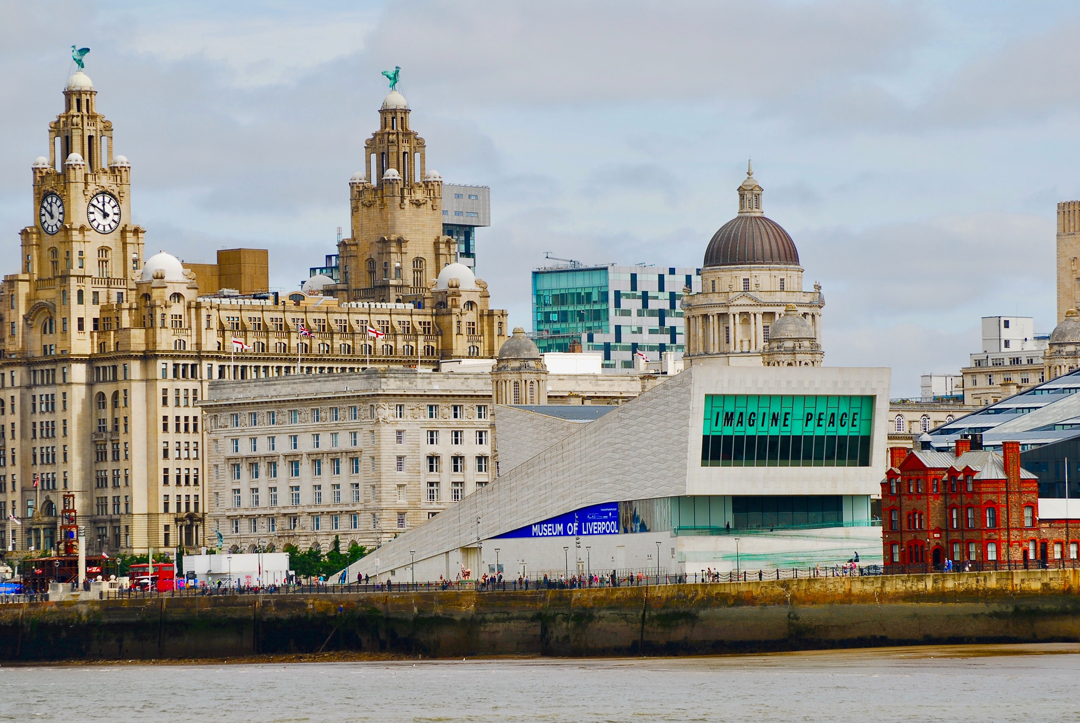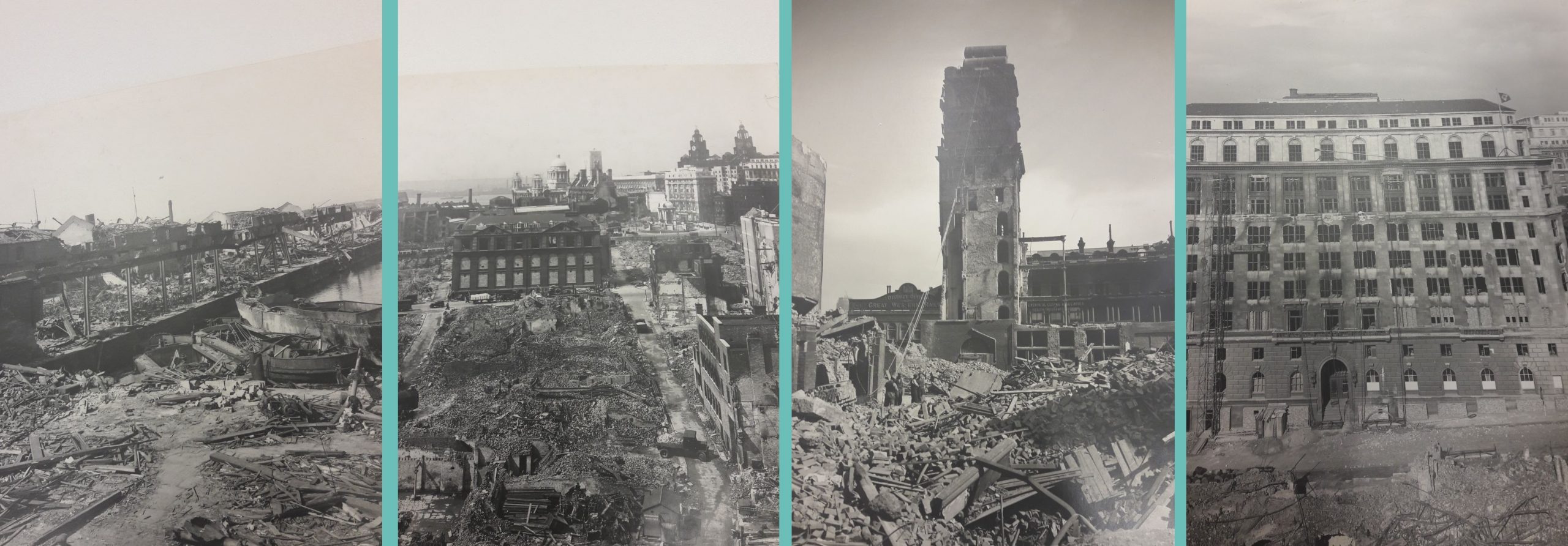Each month our fantastic guides will be here with a blog about the history of the building and the city.
This month Abbie shares her personal connection to the Liverpool Blitz and the theories behind why the Royal Liver Building was remarkably undamaged…
Growing up in Liverpool I have been told story of the Liverpool blitz since my childhood. How one grandparent refused to get evacuated unless they took her little brother with her to escape the bombs dropping on the city. Another grandparent stayed and remembered getting carried in her grandfather’s arms to a bomb shelter, with the distant sound of explosions ringing out.
Other than London, no city faced more bombings than Liverpool. By the end of the war 4,000 people in Merseyside had been killed in the Blitz. So many famous buildings were hit, from the Port of Liverpool building to the World Museum, even Saint George’s Hall couldn’t escape the bombs. St Luke’s church was hit by an incendiary device, the shell of the church sits proudly on the top of Bold street and is now known as ‘The Bombed Out Church’. But amazingly, the Liver Building survived the war. Over the years many have formed theories as to how the building survived.
The Landmark Theory
One of the most common theories is the landmark theory. It was suggested that the Liver Building was used by the Luftwaffe as a landmark to find the docks. With the Three Graces being nestled in between docks, and right on the banks of the River Mersey, it made it ideal in location to be marker to find the docks. Liverpool was targeted as it was the biggest port in the UK at the time and was the gateway to the Atlantic. The docks where a prime target. The Liver Building was the tallest building at the time, so stuck out above the rest of the city. It was suggested that the Luftwaffe used the Liver Building to guide them to the docks. This theory has since been disproven. From the altitude of the planes they wouldn’t have seen the Liver Building any differently to any of the other buildings. It didn’t provide any advantage.
The Aim Theory
Another theory investigates the skill of the bombers. It argues that the Germans just missed us here at The Royal Liver Building. When we look even at modern conflicts, we can see that it can be hard to hit a specific target. The Luftwaffe didn’t have the technology we have today. Adding into that, we had counter measures used to throw the planes off course. The city was often plunged in darkness and once the bomb is dropped there are external factors that can alter its course. Some bombs also failed to detonate. They could have hoped to hit the building, but for whatever reason, couldn’t.
The Occupation Theory
This is the most recent of the theories. We know Hitler had earmarked several buildings in the UK that he wanted for himself, if the Germans were ever able to occupy the UK. Thankfully the German forces never managed to get to England so we will never know exactly what was on their list, but there is a strong suspicion that the Liver Building was indeed on that list. We believe Hitler had visited the city prior to 1932. His half-brother, Alois, lived in the city with his wife Bridget. In Bridget’s memoirs she says Adolf had stayed with the family for a few months long after the Liver Building was built. If he was in the city, he will have seen the Liver Building. Was the dictator enamoured by the flamboyantly gothic architectural style? Or maybe it’s impressive height? We don’t know. Ironically, we do know that Alois and Bridget’s flat was destroyed during one of the last bombing raids on the city.
The blitz in Liverpool caused gaps along the city scape that were filled in in the decades to come. This has led to the city having an eclectic mix of architecture. There’s a blend of themes that show the change in British construction styles. I always say to those visiting Liverpool; when walking down the street look up above the shop fronts as there is a distinctive look that you don’t see anywhere else. But you can get an even better view of this on one of our RLB360 Tours. From the top balcony you get a 360 degree view. Survivors of the Blitz, such as The Bombed Out Church and St George’s hall mingle in with buildings erected on former bomb sites. An extraordinary sight, and a symbol of how Liverpool is never beaten down and will always fight back.



